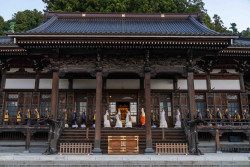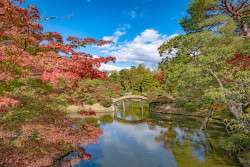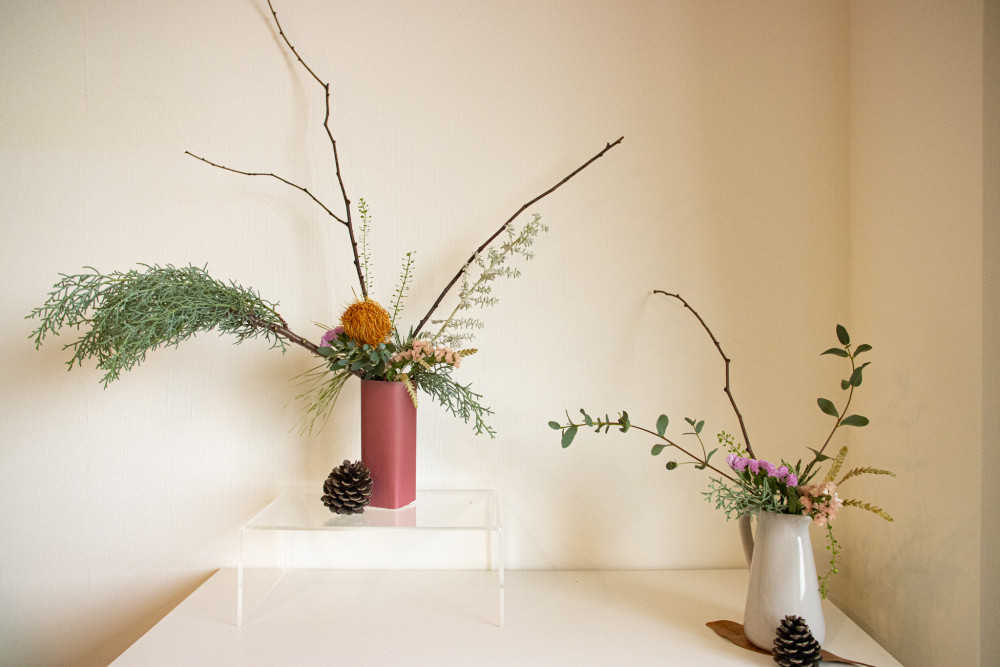
With summer’s warmth lingering and winter’s chill creeping in, autumn often feels fleeting in Japan. A wonderful way to hold on to the season is through autumn ikebana, the centuries-old Japanese art of floral arrangement. As a beginner myself, I’ve gathered advice from ikebana artists and instructors to help you craft your first autumn ikebana in nageire style. Blooms full of textures and tones that bring to mind bright autumn leaves alongside evergreen trees will fill your home with the coziness of fall.
What is Nageirebana?
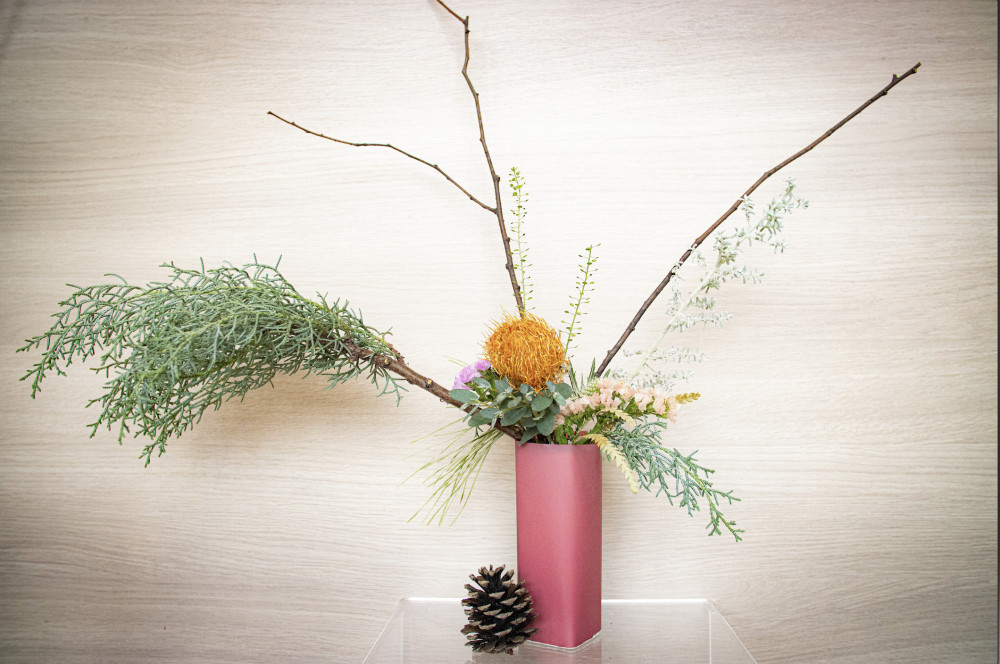
Meaning “tossed” or “thrown” in, nageire or nageirebana (also known as heika) is a style of ikebana that uses a tall vase. While flowers aren’t actually thrown in, nageirebana follows more relaxed guidelines than some other ikebana forms, embracing a plant’s organic movement. Shape stems or leaves in dynamic ways or leave them to flow naturally in an upright, slanting or cascading motion.
Since the vase in nageirebana is neither wide nor flat, you won’t need shippo or kenzan holders to balance flowers. Choosing a vase with a narrow opening can help hold flowers firmly in place.
Gathering Materials for Autumn Ikebana
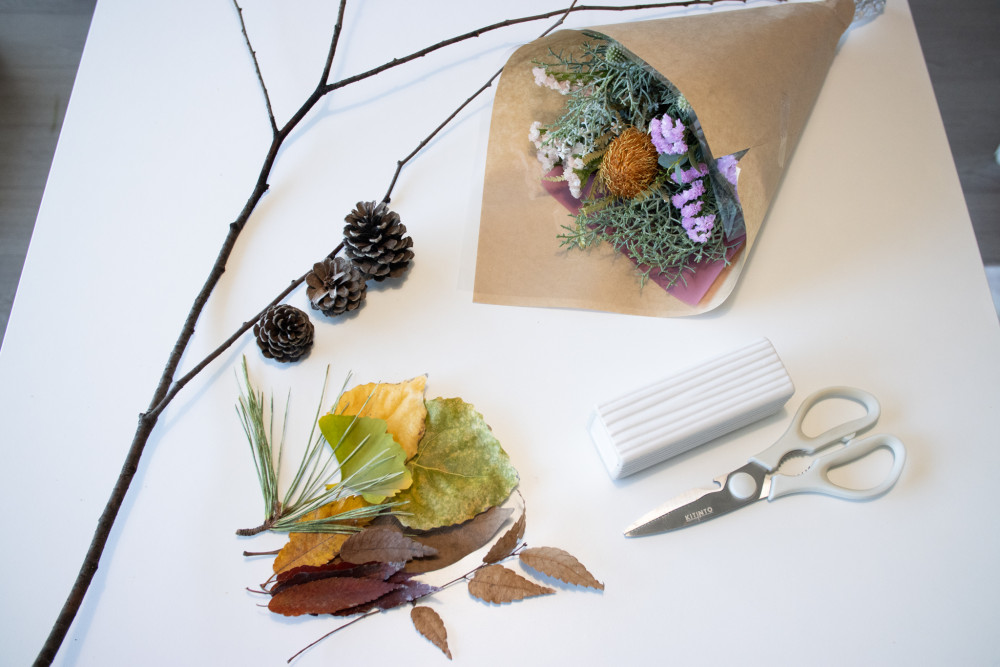
1. Collect Leaves & Branches
If you love momijigari, admiring the changing colors of autumn, you’ll delight in hunting for the perfect leaves and branches scattered on the ground. At my local park, I found a few pinecones, vibrant leaves and a big, beautiful branch. The wind did much of the work, leaving piles beneath their trees. Some fascinating branches with autumnal fruits had also been discarded near trash bins.
During my mid-November search in Tokyo, I noticed many leaves were already drying, curling and crisping up. To keep your ikebana looking fresh for longer, try to find leaves that have just fallen and still retain some moisture, and look out for insect damage like holes and webbing. As you forage, be sure to follow local rules. Although you may collect fallen foliage in local parks and along the roadside, you cannot forage in national parks or gardens.
2. Visit Local Flower Shops
Peeking inside my local flower shop in Tokyo, I spotted a gorgeous bouquet full of comforting textures and tones—fragrant eucalyptus, delicate green bells, spiky eryngium, silver kochia, pink and purple wavyleaf sea lavender, an evergreen cypress branch and—my absolute favorite—an orangey-gold dryandra.
I instantly fell in love and purchased it for ¥1,500. The grocery store near me also had beautiful bouquets ranging from ¥300 to ¥800. Look for long plants of different shapes, colors and textures, with plenty of healthy leaves and a striking flower that reminds you of autumn’s beauty.
3. Find a Cozy Container
In ikebana, the container plays an essential role in highlighting the natural beauty of the arrangement. There’s no need for anything fancy or ornate—many ikebana masters have created breathtaking displays using simple containers like sake bottles. But a vase with deep, earthy tones can accentuate the rich, warm hues of autumn foliage.
With only a simple white vase at hand, I decided to wrap it in the dusky rose-colored paper that came with the bouquet, complementing the muted pink, purple and orange tones of the flowers. Find your cozy container at a ¥100 store like Daiso, a home goods store like Ikea or at your local flower shop. If you plan to incorporate heavy branches into your arrangement, consider adding a stone inside lightweight vases to keep them stable.
Crafting Your Autumn Ikebana Piece
1. Prepare Your Plants
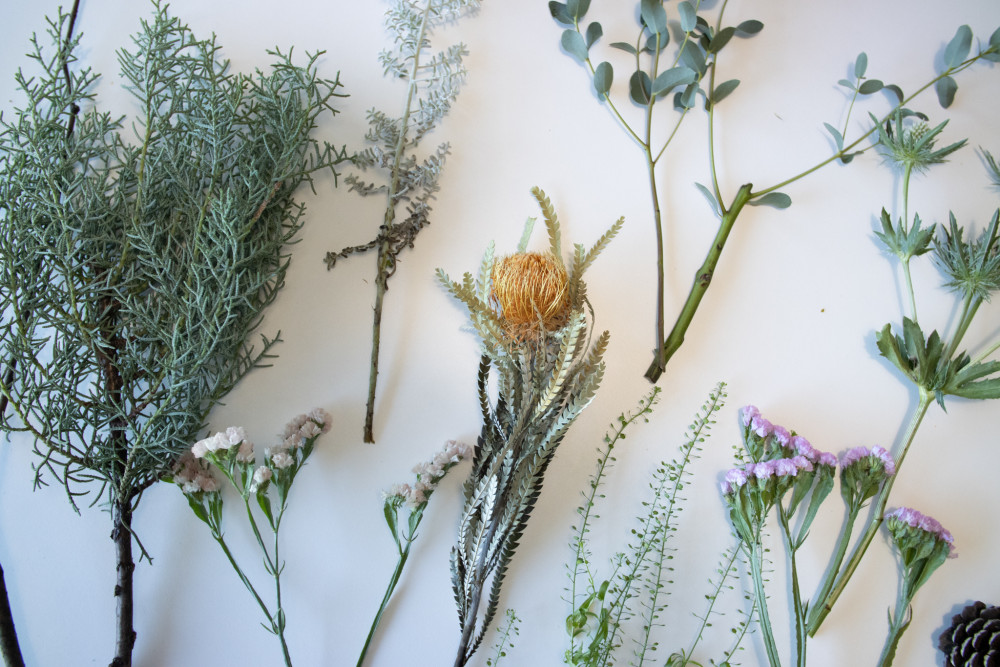
Once you’ve gathered your materials, start by sorting the plants and removing any damaged leaves or petals. Divide larger branches or clusters of flowers into smaller sections, so they’re easier to arrange.
My green bells and silver kochia had some wilting leaves near the base. Since foliage that will sit inside the vase should be removed to prevent bacteria growth, I stripped the lower half of the stems without hesitation. Although the orangey-gold dryandra had plenty of healthy leaves, I chose to remove all of them to use separately in my arrangement.
2. Arrange the Shin, Soe and Hikae
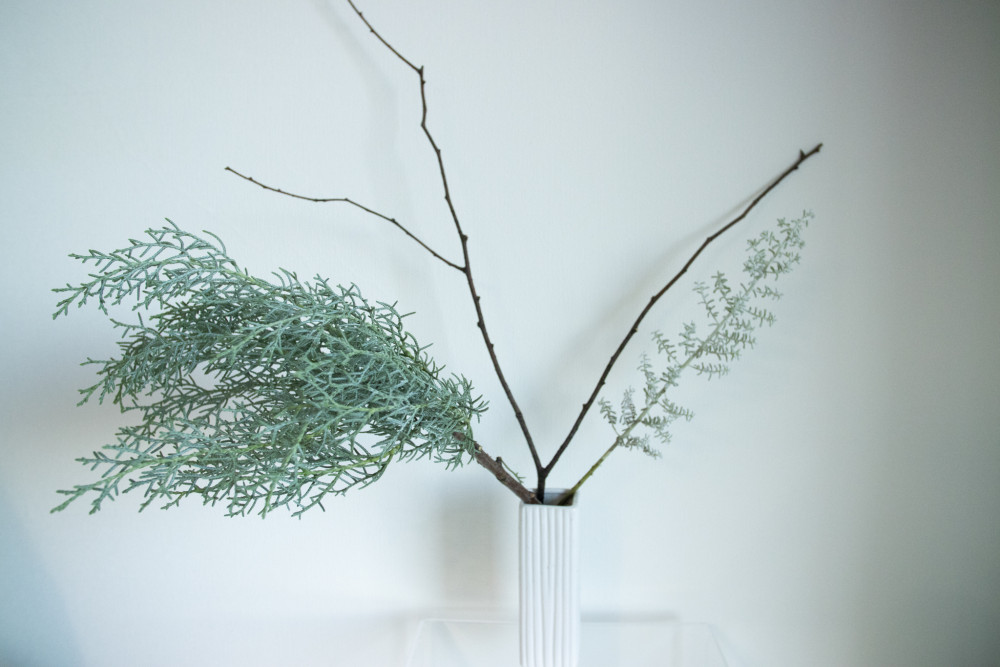
My favorite way to begin an arrangement is with three stems or branches known as the shin, soe and hikae. Using a branch collected from a nearby park, I added the shin, the tallest stem symbolizing heaven, along with the soe, a medium-length stem symbolizing humanity.
Traditionally, the shin should be about twice the height of the vase and angled slightly to create diagonal lines. To make it fit comfortably in the vase, I snapped the bottom to a shorter length and snipped a few limbs. My shin was incredibly tall, extending out of frame in every photo.
Next, I used an evergreen cypress as the hikae, the lowest branch symbolizing earth. To allow the cypress to cascade gracefully, I let it rest at the front left edge of the vase. This branch was very heavy, so I placed a stone inside the vase to prevent it from tilting.
Asymmetry, diagonal lines, and open space are key elements to consider when arranging your ikebana piece. Perhaps untraditional, I placed a tall silver kochia beside the soe to add a bit more texture.
3. Add the Flowers
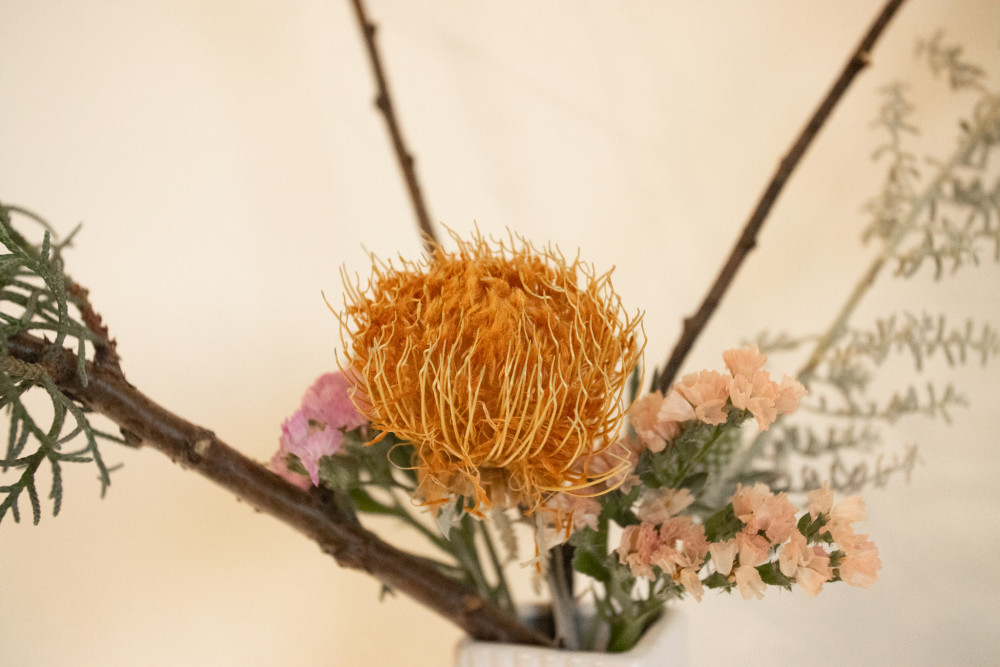
I couldn’t wait to place the orangey-gold dryandra at the center of my arrangement. When arranging your flowers, tilt them slightly forward so that the full face of each bloom is visible. I paired my dryandra with two stems of pink and purple wavyleaf sea lavender, then added two spiky eryngiums to contrast with their soft, papery texture. For any closed petals, you may gently coax them open to help them bloom.
4. Help Plants Stay in Place
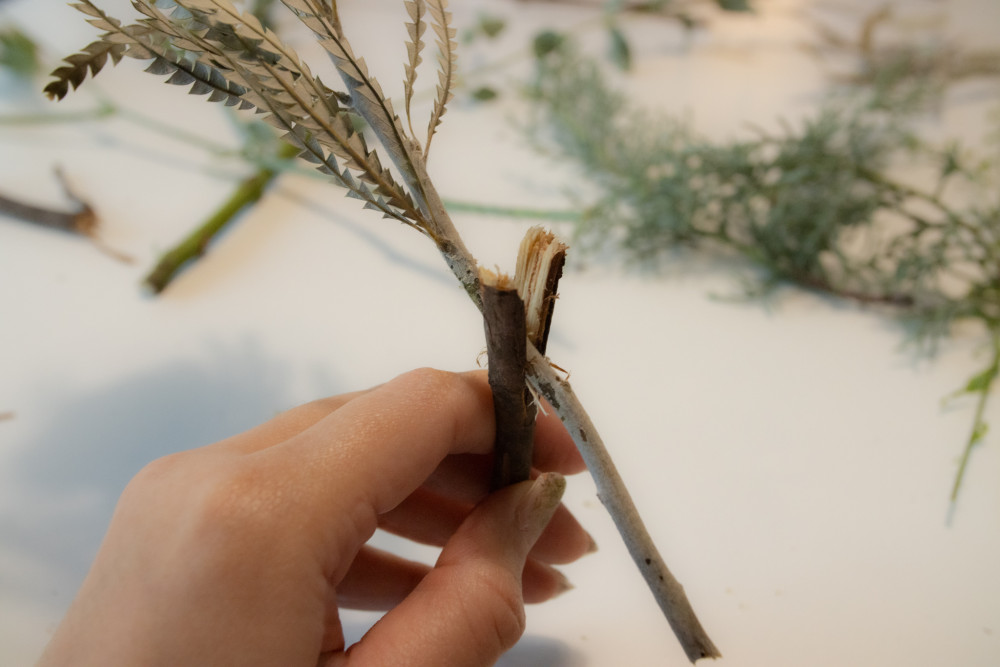
If your flower keeps leaning in the wrong direction or falling backward into the vase, try adding a support stem or branch. Take an extra branch, split one end, and slide in your flower. This technique helps keep flowers facing forward and prevents them from sinking.
Surprisingly, some ikebana artists use a light mist of hairspray to control the movement of certain plants like silver grass. They may also use a touch of hand cream on especially dry, coarse stems. This helps lock in moisture and protect their hands. Some opt for floral wire to shape stems in dynamic ways, but natural movement can be just as beautiful.
5. Form the Neijime
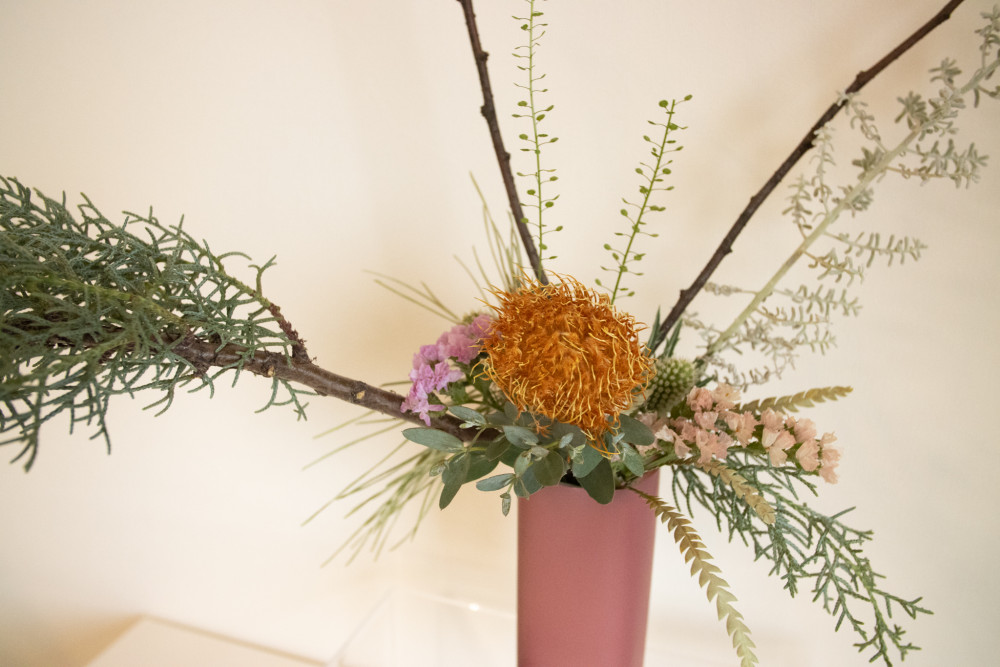
In ikebana, neijime refers to the greenery that covers the mouth of the vase and creates a foundation for the entire arrangement. Lifting the edges of flowers already in place, I tucked in a few cypress and dryandra leaves I’d trimmed earlier, a eucalyptus stem and a handful of pine needles I found at the park. It is sometimes easier to do this step at the very beginning rather than the very end.
To finish, I added two wispy green bells just behind the dryandra flower. And with that, my first autumn ikebana arrangement was complete!
Tips for an Autumn Feel
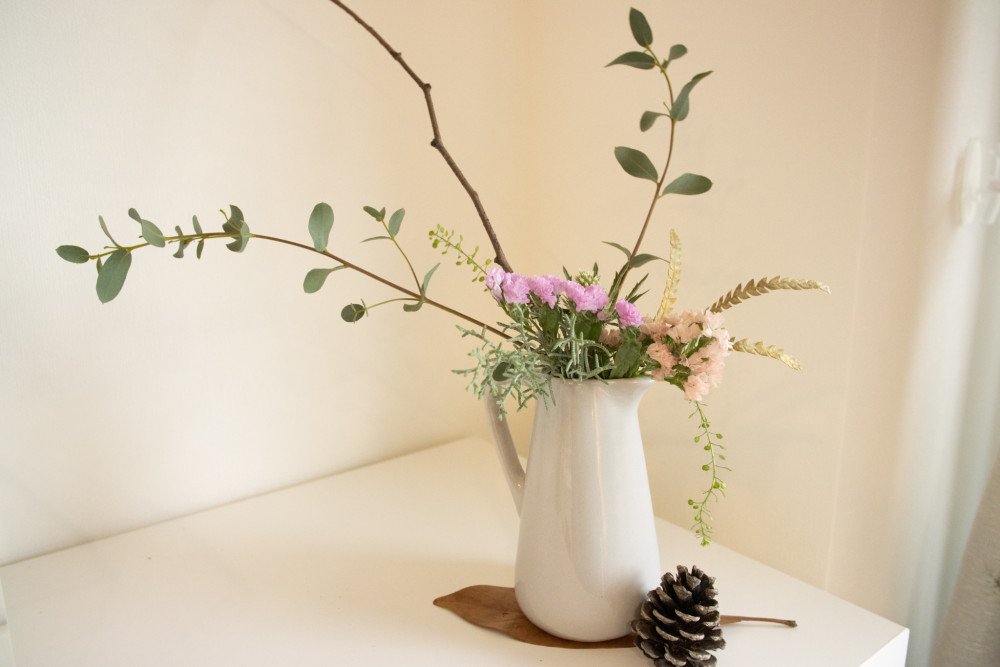
-Find flowers with cozy colors, textures and scents that remind you of autumn.
-Surround your arrangement with small touches like pinecones or freshly fallen leaves.
-Choose a vase with deep, earthy tones or a woven basket to complement autumn foliage.
-Use leftover trimmings to create smaller, charming arrangements that can be placed throughout your home.
Ikebana invites creativity and playfulness while cherishing the season. Let yourself experiment freely and enjoy the process of crafting a piece that embodies the beauty of autumn. To learn more about this art, read our interview with Tokyo-based Ikebana teacher Suisho Higuchi.
You might also enjoy reading our guide to: 10 Lesser-Known Secondhand Bookstores in Tokyo that Sell English Books.
Originally published November 30, 2024. Updated for 2025.




